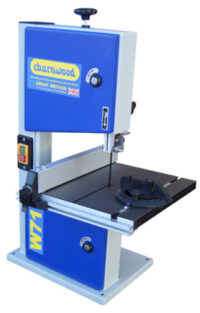
The first question that you may ask is how much wood glue do I need for this project? There are many options including PVA and Polyurethane. Hide is also an option. These are some tips. You will only need six to eight percent of what is recommended for the project you are working on. In order to apply glue properly, temperatures should be between 70 and 80 degrees F, with 40 to 60 percent humidity and a 6-8% moisture content. After the glue has dried, clamp the pieces together. To save clamps from being wasted, you can mark the pieces with a chalk pen. Higher temperatures will accelerate drying, while lower humidity will prolong the process.
PVA
PVA wood adhesive requires you to pay attention to the curing process. The curing time of the joint is crucial. A longer cure will result in a weaker bond. Depending upon the glue type, this can take anywhere from 20 minutes to an hour. You can measure the length the "open time" to find out how long it takes to clamp the joint.

Polyurethane
For gluing wood pieces together, polyurethane glues work well. They adhere pieces without sagging or cracking because they expand and do not draw moisture into the wood pores. Use polyurethane adhesives correctly. It is best to apply them at room temp. Wait until they have completely cured before clamping. Titebond Polyurethane glue takes approximately 25-30 minutes to assemble.
Hide
When applying hide glue, it is important to know how much to use. The ideal temperature for applying hide glue to the skin is 135F. Hot hide glue is sticky and takes several hours to break open. Cold boards will make it go away quickly. There are three types: ground, pearls, or flakes. While the ground glue requires less time to soak, pearls and flakes require 8-10 hours drying.
Gorilla
If you are building a table or other wooden piece, you may be wondering how much Gorilla wood glue to use. The wood glue is water-resistant and bonds wood securely without causing damage. It has a fast grip time and dries to a natural colour. Gorilla wood glue works well on softwoods and hardwoods. You can also use it on wood composites such as PVC.

Skin
You don't have to wonder how much woodglue you should be using on your skin. There are many wood glue types, each with a different way of binding wood. The safer types are safer for your fingers, hair and nails. Stronger glues should not be applied to skin. Listed below are some ways to avoid gluing your skin with wood glue.
FAQ
How do I know what tools are best suited for me?
It is important to consider your needs and preferences when shopping for tools. Do you prefer metal or plastic handles? What size are you most comfortable using for screws and nails? Are you comfortable with power tools, or would you rather use hand tools?
What's the difference between plywood vs particle board?
Plywood is made of layers of wood that are pressed together under pressure. Plywood comes with a range of thicknesses, and it is most commonly used for flooring and cabinets. Particle board can be made from sawdust, resin, and then compressed to make large blocks. It's commonly used for home improvement projects. Both types of boards can be easily cut and are durable.
How long does it take for furniture to be finished?
It all depends on what type of wood you use, how complex your design is, and how much finishing you use. Hardwoods are more difficult to maintain than softwoods. Hardwoods tend to be more expensive that softwoods. But they last longer and resist moisture better. It takes between one and three months to finish a piece.
How can I learn basic skills in woodworking?
A great way to start learning how to build furniture is by building a simple bench for yourself. This project can easily be done using whatever wood you have at your house. If you are unsure what type of wood is best, you can get cheap pine boards at Lowes (or Home Depot) instead. After building your bench, sand off any rough edges and apply a stain or varnish.
Statistics
- If your lumber isn't as dry as you would like when you purchase it (over 22% in Glen Huey's opinion…probably over 10-15% in my opinion), then it's a good idea to let it acclimate to your workshop for a couple of weeks. (woodandshop.com)
- Woodworkers on the lower end of that spectrum, the bottom 10% to be exact, make roughly $24,000 a year, while the top 10% makes $108,000. (zippia.com)
- The best-paid 10 percent make $76,000, while the lowest-paid 10 percent make $34,000. (zippia.com)
- Most woodworkers agree that lumber moisture needs to be under 10% for building furniture. (woodandshop.com)
External Links
How To
How do you measure wood accurately?
We have several ways to measure wood. A digital caliper is a tool that measures distances. We also use a laser level to ensure your work surface flattens.
Two jaws can be opened and closed on a digital caliper. One jaw holds the measured object while the other measures the distance between the two points. The digital scale is perfect for measuring tiny distances such as wood thickness.
Laser levels use an infrared beam of light to project a line across the ground. The laser emits a red dot on the line. It is possible to see if the surface of the surface are even by looking down at it. For larger surfaces, laser leveling is the best method of checking accuracy.
Bubble levels look similar to a compass. There is a bubble in the center of the device. The device will inform you if the surface is level if the bubble is in the center. For checking the accuracy of small areas, bubble levels are useful.